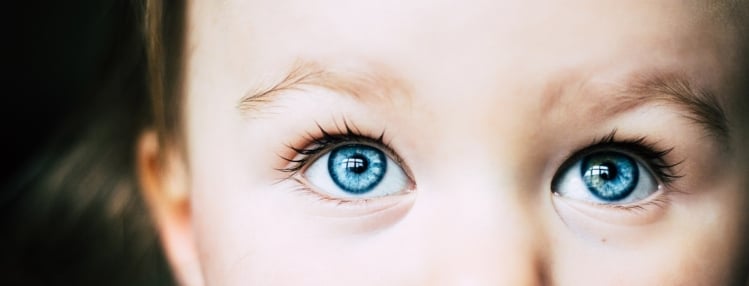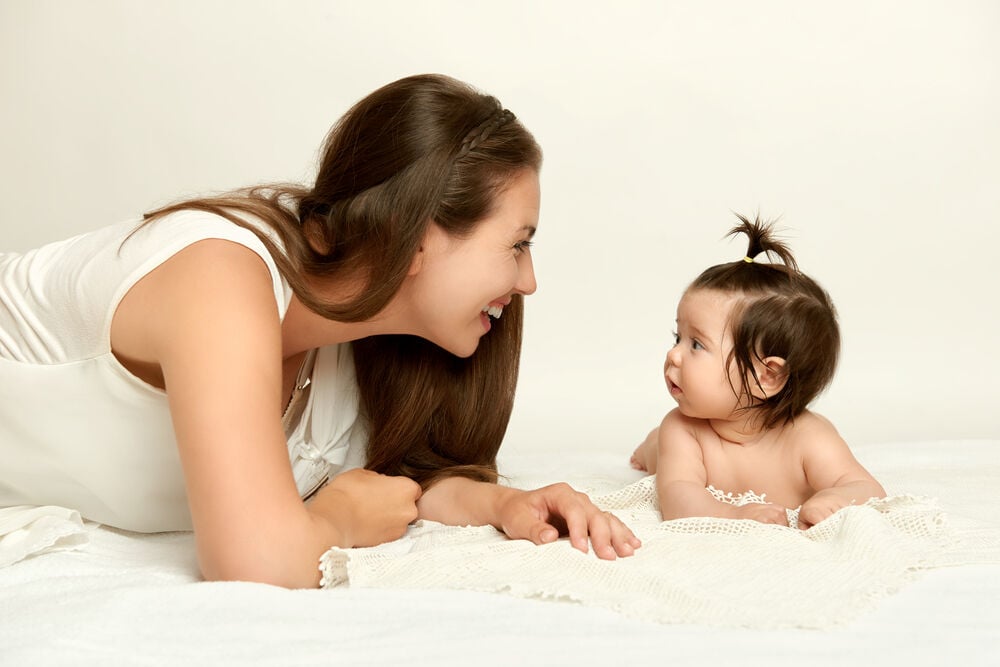-
Tracking cycle
-
Getting pregnant
-
Pregnancy
-
Help Center
-
Flo for Partners
-
Anonymous Mode
-
Flo app reviews
-
Flo Premium New
-
Secret Chats New
-
Symptom Checker New
-
Your cycle
-
Health 360°
-
Getting pregnant
-
Pregnancy
-
Being a mom
-
LGBTQ+
-
Quizzes
-
Ovulation calculator
-
hCG calculator
-
Pregnancy test calculator
-
Menstrual cycle calculator
-
Period calculator
-
Implantation calculator
-
Pregnancy weeks to months calculator
-
Pregnancy due date calculator
-
IVF and FET due date calculator
-
Due date calculator by ultrasound
-
Medical Affairs
-
Science & Research
-
Pass It On Project New
-
Privacy Portal
-
Press Center
-
Flo Accuracy
-
Careers
-
Contact Us
Baby Eyes Changing Color: The Surprising Truth


Every piece of content at Flo Health adheres to the highest editorial standards for language, style, and medical accuracy. To learn what we do to deliver the best health and lifestyle insights to you, check out our content review principles.
Why does baby eye color change?
Just like the myth that your heart stops when you sneeze, there are plenty of myths and false facts surrounding newborn baby eyes and colors. Most baby eye changes occur between 6 to 9 months. These changes may continue until the age of 3 since your child’s body develops and as they grow. And surprisingly, eye color may continue to change into adulthood for up to 10% of the population. It’s another change that’s exciting to observe in your little one.
Many newborn baby eyes appear blue or gray, and whether or not this color changes frequently depends on the parents' eye colors.
The iris is the part of the eye responsible for pigmentation, and melanin is the pigment that gives way to baby eye color, hair color, and skin color. It’s the amount of melanin that truly determines what the color your newborn baby's eyes will be — and it's mainly genetics that determines how much melanin a person ends up with. The more melanin you have, the darker your eye color will be. The less melanin you have, the lighter your eyes will be. And melanin is activated by light exposure, which explains why over the first year of a baby’s life you may see significant eye color changes.
In newborns, eye color development has not yet begun. In other words, the pigmentation of the iris hasn’t developed due to the absence of light. This is why many newborn baby eyes are light or appear blue early on. With that said, a baby born with already genetically high melanin levels, such as those with darker skin, may already have darker eyes at birth. In these cases, the eyes frequently stay relatively dark.
As your baby is exposed to light outside the womb and during their first year of life, their body produces melanin. This is where you’ll see your baby eyes change color. Ultimately, how much they change is determined by genetics.
When do baby eyes change color?

Generally, baby eye color changes take place around 6 months old — but this isn’t a set rule by any means. Your baby’s eye color may continue to change up until 9 months to a year old. Some children even experience eye color changes until 3 years of age. Often, doctors and other experts recommend waiting until your child’s first birthday to determine their eye color due to these variances. By this time, you can usually predict with some accuracy what color their eyes will be.
Baby eye color change progression
So, when will you see the biggest changes? What are the milestones when it comes to baby eye color change progression? Below is a general overview of the most common baby eye color changes. Remember, though, that everyone is different and this timeline is in no way set in stone — it's simply a guide.
The first 6–9 months is generally when you will see the most changes in your baby’s eye color. Due to the production of melanin, their eyes may begin to darken. You likely won’t notice it all of a sudden; it will often appear fairly gradually.
At 12 months, many babies have their 'final' eye color. However, some sources suggest that your baby’s eye color may continue to change until the age of 3 or 6. Sometimes eye color can experience subtle changes well into adulthood — but this is rare.
Newborn baby eyes: Will they change color?
Most newborn baby eyes will change color, but not all. Again, this is where genetics plays a part, and you can somewhat predict your baby’s eye color off of genetics. If both parents have light blue eyes, your child will likely end up with light blue eyes. However, if one parent has brown eyes, this gene may dominate the light eye color. There's no way to know for certain, and the most you can do is make a probable prediction early on and then wait until your child is a year old to make a more concrete prediction.
The first year of your child’s life is an exciting time. Watching your child grow, change, and develop involves moments and experiences you’ll want to treasure for the rest of your life. Many parents find it interesting to see how their baby's eye color changes, and now you know a little more about when and why it happens.
In the grand scheme of things, eye color shouldn’t be added to your list of fears — especially when it comes to your child. It’s something that is entirely out of your control. Instead, focus on enjoying your time with your little one. Kids have a tendency to grow up fast, so embrace all the moments and milestones (and yes, that can absolutely include watching for those subtle but ever-present baby eye color changes).
Take a quiz
Find out what you can do with our Health Assistant


Hey, I'm Anique
I started using Flo app to track my period and ovulation because we wanted to have a baby.


The Flo app helped me learn about my body and spot ovulation signs during our conception journey.


I vividly
remember the day
that we switched
Flo into
Pregnancy Mode — it was
such a special
moment.
Real stories, real results
Learn how the Flo app became an amazing cheerleader for us on our conception journey.




